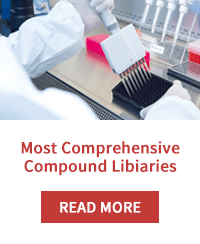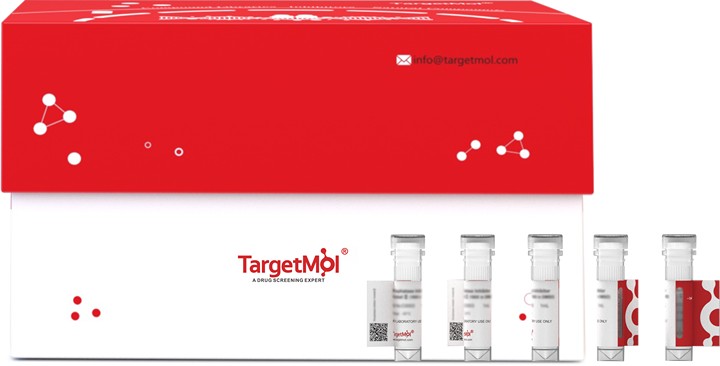

Ephrin-A5 also known as EFNA5, is a member of the Ephrin family. The Eph family receptor interacting proteins (ephrins) are a family of proteins that serve as the ligands of the Eph receptor, which compose the largest known subfamily of receptor protein-tyrosine kinases (RTKs). Ephrin subclasses are further distinguished by their mode of attachment to the plasma membrane: ephrin-A ligands bind EphA receptors and are anchored to the plasma membrane via a glycosylphosphatidylinositol (GPI) linkage, whereas ephrin-B ligands bind EphB receptors and are anchored via a transmembrane domain. Ephrin-A5/EFNA5 may function actively to stimulate axon fasciculation. The interaction of EFNA5 with EPHA5 also mediates communication between pancreatic islet cells to regulate glucose-stimulated insulin secretion. Ephrin-A5/EFNA5 also serves as a cognate/functional ligand for EPHA7, their interaction regulates brain development modulating cell-cell adhesion and repulsion.

| Pack Size | Availability | Price/USD | Quantity |
|---|---|---|---|
| 100 μg | 5 days | $ 462.00 |
| Description | Ephrin-A5 also known as EFNA5, is a member of the Ephrin family. The Eph family receptor interacting proteins (ephrins) are a family of proteins that serve as the ligands of the Eph receptor, which compose the largest known subfamily of receptor protein-tyrosine kinases (RTKs). Ephrin subclasses are further distinguished by their mode of attachment to the plasma membrane: ephrin-A ligands bind EphA receptors and are anchored to the plasma membrane via a glycosylphosphatidylinositol (GPI) linkage, whereas ephrin-B ligands bind EphB receptors and are anchored via a transmembrane domain. Ephrin-A5/EFNA5 may function actively to stimulate axon fasciculation. The interaction of EFNA5 with EPHA5 also mediates communication between pancreatic islet cells to regulate glucose-stimulated insulin secretion. Ephrin-A5/EFNA5 also serves as a cognate/functional ligand for EPHA7, their interaction regulates brain development modulating cell-cell adhesion and repulsion. |
| Species | Human |
| Expression System | HEK293 |
| Tag | hFc |
| Accession Number | P52803 |
| Synonyms | LERK7, EPLG7, EFL5, ephrin-A5, GLC1M, RAGS, AF1 |
| Construction | A DNA sequence encoding the extracellular domain (NP_001953.1)(Met 1-Asn 203) of human Ephrin-A5 (NM_001962.1) precursor was expressed with the C-terminal fused Fc region of human IgG1. |
| Protein Purity | > 95 % as determined by SDS-PAGE |
| Molecular Weight | 47.9 kDa (predicted) |
| Endotoxin | < 1.0 EU per μg of the protein as determined by the LAL method |
| Formulation | Lyophilized from sterile PBS, pH 7.4. Please contact us for any concerns or special requirements. Normally 5 % - 8 % trehalose, mannitol and 0. 01% Tween 80 are added as protectants before lyophilization. Please refer to the specific buffer information in the hard copy of CoA. |
| Reconstitution | A hardcopy of datasheet with reconstitution instructions is sent along with the products. Please refer to it for detailed information. |
| Stability & Storage |
Samples are stable for up to twelve months from date of receipt at -20℃ to -80℃. Store it under sterile conditions at -20℃ to -80℃. It is recommended that the protein be aliquoted for optimal storage. Avoid repeated freeze-thaw cycles. |
| Shipping |
In general, recombinant proteins are provided as lyophilized powder which are shipped at ambient temperature.Bulk packages of recombinant proteins are provided as frozen liquid. They are shipped out with blue ice unless customers require otherwise. |
| Research Background | Ephrin-A5 also known as EFNA5, is a member of the Ephrin family. The Eph family receptor interacting proteins (ephrins) are a family of proteins that serve as the ligands of the Eph receptor, which compose the largest known subfamily of receptor protein-tyrosine kinases (RTKs). Ephrin subclasses are further distinguished by their mode of attachment to the plasma membrane: ephrin-A ligands bind EphA receptors and are anchored to the plasma membrane via a glycosylphosphatidylinositol (GPI) linkage, whereas ephrin-B ligands bind EphB receptors and are anchored via a transmembrane domain. Ephrin-A5/EFNA5 may function actively to stimulate axon fasciculation. The interaction of EFNA5 with EPHA5 also mediates communication between pancreatic islet cells to regulate glucose-stimulated insulin secretion. Ephrin-A5/EFNA5 also serves as a cognate/functional ligand for EPHA7, their interaction regulates brain development modulating cell-cell adhesion and repulsion. |
bottom
Please read the User Guide of Recombinant Proteins for more specific information.
Ephrin A5/EFNA5 Protein, Human, Recombinant (hFc) LERK7 AF-1 EFL-5 EPLG 7 EFL 5 EPLG7 EPLG-7 EFL5 ephrin-A5 LERK 7 GLC1M RAGS LERK-7 AF 1 AF1 recombinant recombinant-proteins proteins protein
